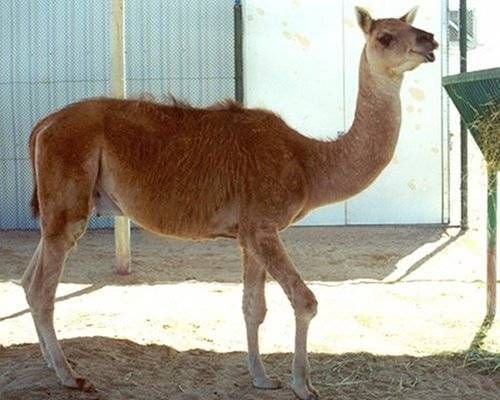
This week’s article on interesting hybrids is a continuation of the previous piece on carnivoran hybrids (check it out here). It features a broader variety comprising insects, cetaceans and ungulates. Read on to find out!

1. Killer Bees
For many, it is a surprise that these bugs make this list. Killer bees, also known as Africanized bees, are hybrids of Eastern lowland honey bees and European honey bee species. Killer bees came to be when foreign scientists attempted to interbreed European and African bees to increase honey production. However, a few swarms accidentally escaped into the wild and blended with the ecosystem when these species were housed in South America. Their range soon spread through the American continents – especially North America, where they are particularly predominant today. Killer bees are smaller than most other bees. They also possess the characteristic golden-coloured body with bands of brown, although these bands are often darker.
No other bee species comes close to the “bad rep” these guys have. They literally have the word “killer” in their name. It doesn’t get any worse than that. They’re known to seriously injure or kill large animals while defending their hives when upset. The death toll from killer bees is about 1000 in the USA. Killer bees are very territorial and irritable. They are also very unyielding insects, known to chase down intruders for more than a quarter of a mile if triggered. When they attack, they do in overwhelming numbers, delivering a myriad of excruciating stings – up to 10 times more than European bees.
Honey bees are generally a troublesome bunch when upset. It’s just this bunch is a notch above the rest in this regard. They are undeniably the most aggressive bee species in the world. Despite all these, they still rank as top choice species for apiculturists because of their superior honey production and pollinating prowess, among other qualities, thanks to their genetics.

2. Camas
The cama is a hybrid of a male dromedary camel and a female llama. The first cama came to be by human intervention – artificial insemination. Male dromedary camels outweigh female llamas by a long shot – so normal breeding is not an option. The cama is particularly special because it is a “link” – albeit artificial – between two dissimilar, isolated species of the camelid family. As of 2008, five camas have been created.
The appearance of a cama exudes a mix of the traits of both parent camelids. Camas do not have humps like dromedary camels – similar to llamas. However, their legs are identical to those of dromedary camels, making them just as capable of travelling the desert. Furthermore, their coats take on the fluffiness of llamas’ coats. Their hooves are halfway between the cloven feet of llamas and the foot pads of camels. Also, their ears are midway between the two parents’ ear features. Camas reach 4 to 5 feet in height (at the shoulder) and weigh between 100 to 400+ kg.
Camas are presumed to be fertile because of their parents’ similar chromosomes. However, like other hybrids, one can’t reasonably ascertain how their temperaments will bud. For example, the first male camas initially had a poor temperament. It was very “proud” – although this changed later. The female, on the other hand, was very shy. The objective behind creating the cama was to produce an animal with the strength of a camel and the cooperative attitude and wool production of a llama in one body.

3. Wholphins
A wholphin is a mix between a false killer whale and a bottlenose dolphin. The name, at first glance, erroneously gives the impression that the wholphin is a hybrid of a whale and a dolphin. However, the false killer whale is technically a dolphin. Therefore, the wholphin is a mix of two dolphin species. The first recorded wholphin was birthed in 1981. Wholphins have been bred in captivity and are presumed to be in the wild, especially in areas where their parents are close.
A wholphin has a skin tone that falls between that of the black false killer whale and the light grey of the bottlenose dolphin. Their eventual sizes also fall between their parents. Wholphins also have a total of 66 teeth compared to the 44 teeth of bottlenosed dolphins and 88 of false killer whales. Wholphins grow pretty quickly, reaching the size of adult bottlenose dolphins in a few months. They are carnivorous, much like their parents.

4. Zebroids
Zebroids are hybrids of zebras and other equines. However, the latter usually includes horses and donkeys. More times than often, zebroids have zebra fathers, although there are cases of reversed pairings. Examples of zebroids include zonkeys/zebrasses/zebronkeys (a cross between zebras and donkeys) and zorses (zebras and horses). These animals are sterile because of a dissimilarity in chromosomes that affects normal meiotic cell divisions.
Usually, a zebroid’s physical build is most inclined to their non-zebra parents’. However, the zebra’s stripes are always present – albeit in fewer amounts. These stripes are usually on the legs, neck, or other body parts. If non-zebra parents have other distinct markings, they also appear alongside the stripes. Stripes are generally present on coloured parts of the animal’s fur. Zebroids have more practicable applications than zebras – like, say, riding. This is because zebras don’t have anatomy that favours this. However, zebroids inherit some portion of their wild parent’s temperament. This makes them more difficult to handle than purebred horses.
For more wildlife-themed reads, click here. If you have any comments or thoughts, kindly drop them in the comment section.



Leave a Reply